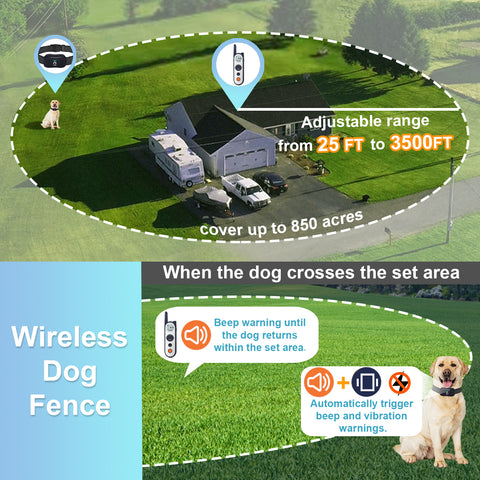The process from electronic collar to wireless electronic fence
The progression from an electronic collar to a wireless electronic fence involves the expansion of functionality and the integration of advanced technologies to create a system for containing and controlling pets within a defined area. Here's a general outline of the process:

-
Electronic Collar: An electronic collar typically consists of a collar equipped with electronic components such as a battery, circuitry, and communication modules. It may be used for various purposes, including training, behavior modification, and tracking.
-
Addition of Boundary Control: To transition to a wireless electronic fence system, the electronic collar's capabilities are expanded to include the reception of signals and instructions related to the boundaries of a designated area. This involves integrating technology that allows the collar to detect and respond to signals emitted by the wireless boundary system.
-
Wireless Boundary System: A wireless electronic fence system includes a central control unit that emits a signal encompassing the designated boundaries of the containment area. This signal is picked up by the electronic collar worn by the pet.
-
Signal Reception and Feedback: The electronic collar is designed to receive the signals transmitted by the wireless boundary system. When the pet wearing the collar approaches the boundary, the collar emits a warning tone or vibration to alert the pet and deter them from crossing the boundary.
-
Correction Mechanisms: In addition to the warning signals, the electronic collar may incorporate corrective stimuli, such as static corrections or adjustable levels of vibration, to reinforce the boundaries and prevent the pet from crossing into restricted areas.
-
Customization and Control: Wireless electronic fence systems often provide pet owners with the ability to customize the boundaries of the containment area and adjust the intensity of warning signals and corrective stimuli based on their pet's behavior and training needs.
-
Integration with Remote Control and Monitoring: Many wireless electronic fence systems offer remote control and monitoring capabilities through a central control unit or a companion mobile app. This allows pet owners to manage the system, track their pet's movements, and receive alerts regarding boundary breaches.
The transition from an electronic collar to a wireless electronic fence involves the incorporation of boundary control technology, signal reception and feedback mechanisms, customizable corrective stimuli, and remote control and monitoring features. This progression expands the functionality of the electronic collar to create a comprehensive system for containing and managing pets within a specified area.




